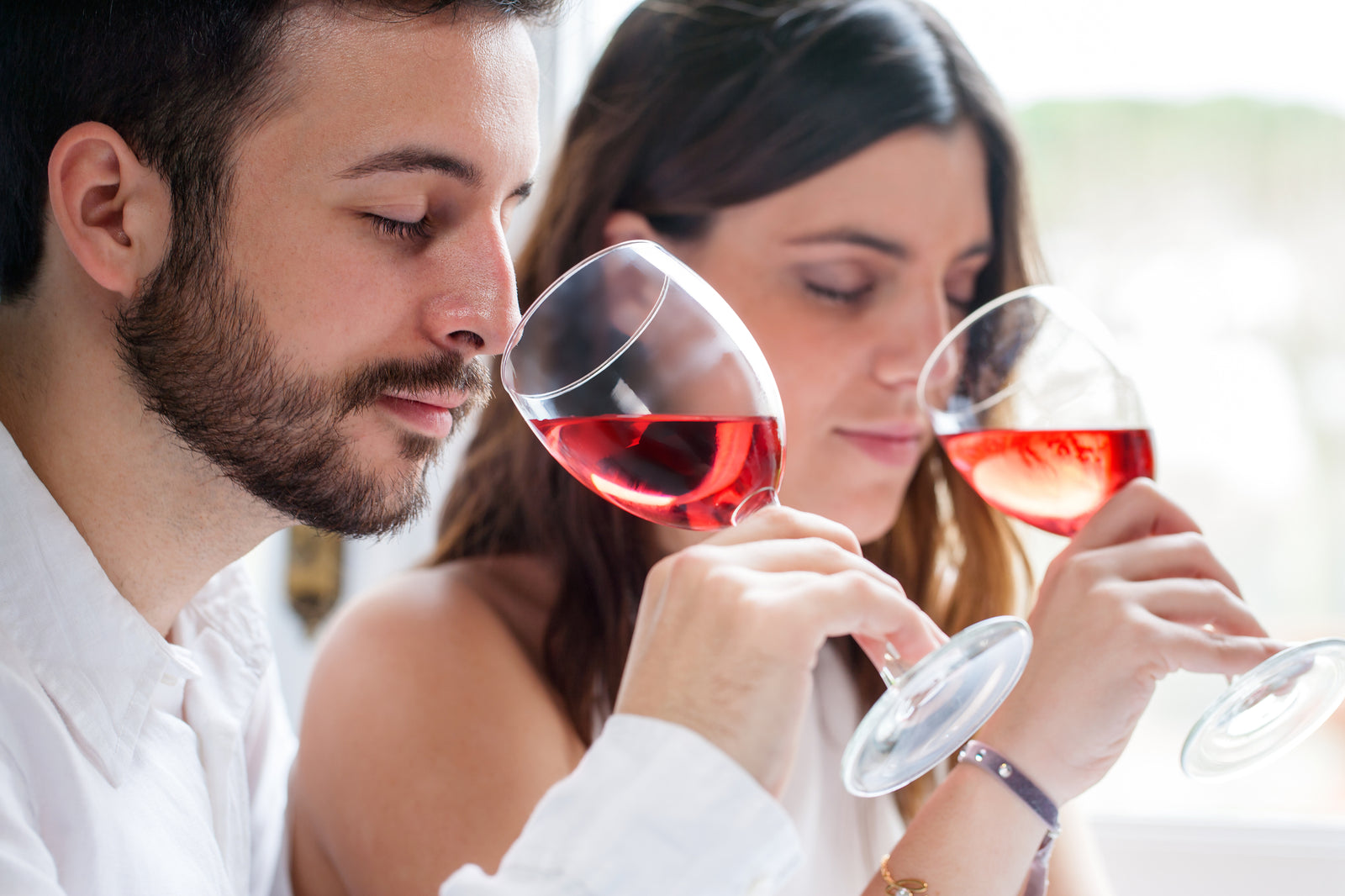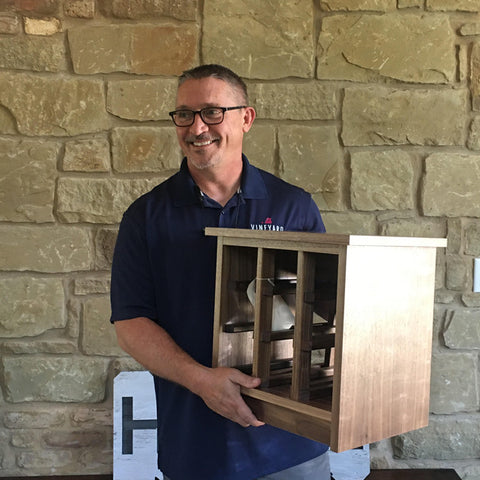As wine enthusiasts, we all have our unique preferences when it comes to wine tastes and grape varieties. Whether you're a connoisseur or just enjoy the occasional bottle of wine, keeping track of your wine-tasting experiences can enhance your appreciation for this ancient beverage.
Don't let those fleeting impressions slip away - discover the art of capturing your wine-tasting notes with finesse.
In this blog post, we'll explore some valuable tips that will help wine drinkers of all types elevate their note-taking game and truly savor every sip. So, grab your favorite bottle of wine and let's dive into the
wonderful world of wine tasting!
Start with the basics
When you taste wine, pay attention to its Appearance, Aroma, Taste, and Finish. For each of these categories, ask yourself a few questions and make note of your answers.
Appearance: What color is the wine? Is it clear or cloudy.
Aroma: What do you smell? Are there any particular aromas that stand out to you?
Taste: How does the wine taste? Is it sweet, sour, bitter, or salty?
Finish: How does the wine feel in your mouth after you’ve swallowed it? Is the finish long or short?
Once you’ve gotten the basics down, start paying attention to other factors that can influence a wine’s flavor.
For example, is the wine aged in oak barrels? If so, that could impart flavors of vanilla or caramel. Is the wine made with certain types of grapes? Certain grape varietals can have characteristic flavors, like Riesling wines which often taste fruity or Chardonnay wines which can be buttery.
Finally, don’t be afraid to experiment! Try different kinds of wines, from different regions and countries. Compare wines made with different grape varietals.
And if you have a chance to taste a wine that’s barrel-aged or made with rare grapes, go for it! The more you taste, the more nuanced your wine-tasting notes will become.
Taking Your Wine Tasting to the Next Level
Now that you have the basics down, it's time to take your wine tasting to the next level. Here's how:
- Printable Business Form Templates for Wine Tasting: There's no wrong way to take notes at a wine tasting, but having a structured format can help. Consider using a free printable wine tasting placemat or form. This can guide you to note things like the color of the wine, its viscosity, and the impressions it leaves on your palate.
- Use of Web Browser for Research: As a wine lover, don't hesitate to use your web browser to research mysterious wines or unfamiliar terms that come up during your tasting.
- Free Printable Blind Wine Tasting: Up the ante by organizing a blind wine tasting event. You can find free printable blind wine tasting sheets online. This is a fun way to challenge your palate and deepen your appreciation for different grape varietals and regions.
- Charcuterie Board: Pair your wine with a charcuterie board. The flavors of the meats, cheeses, and accompaniments can bring out unexpected notes in the wine, taking your tasting experience to another level.
- Mystery Wines: Throw a twist into your wine tasting by including a few mystery wines in your lineup. This adds an element of surprise and could lead to some interesting discoveries.
- Full Glasses vs Tasting Portions: While full glasses may be tempting, stick to tasting portions. This allows you to try a broader range of wines and prevents palate fatigue.
- Viscous Wines: Pay attention to the consistency of the wine. Viscous wines often have a heavier mouthfeel and can provide a different tasting experience compared to lighter-bodied wines.
Blind Tasting: A Fun Challenge for Wine Connoisseurs
Blind tasting is an exhilarating exercise that can not only test your palate but also remove any preconceived notions about specific wines. Here are a few key points to remember during a blind tasting:
- Wine Connoisseurs: Blind tasting is a great way for wine connoisseurs to challenge their knowledge and expertise. Without being influenced by labels or brands, you'll rely solely on your senses to assess the wine.
- Fun Wine Tasting: Blind tasting can bring a fun twist to your regular wine tasting sessions. You can add a competitive element by introducing scoring for correct guesses about the type of wine, its origin, or the grape variety.
- Red Wines and White Wines: Start by distinguishing between red and white wines. This can be easy when the wines aren't disguised, but it becomes a fun challenge when you use black wine glasses.
- Wine Placements: To add another layer of complexity, mix up the placements of the wines. Try tasting the wines in different orders and see if your perceptions change.
Remember, the goal of a blind tasting is not just to identify the wine correctly but also to engage your senses and enhance your appreciation of the wine. So, pour a glass and enjoy the experience.
Interpreting Bottle Labels: Unlocking the Secrets of Wine
Deciphering wine bottle labels can be a fascinating journey into the world of wine, offering valuable insights into the winemaking process, different types of wine, and their unique characteristics. The bottle label is like a map, guiding you to make the best selection from a variety of wine options:
- Winemaking Process: Certain labels provide clues about the winemaking process. For instance, terms like "barrel-aged" or "fermented" hint at the techniques used in the production of the wine.
- Different Types of Wine: Labels help to distinguish between wines like Cabernet Sauvignon, Pinot Noir, Merlot, and others. Understanding these varietals can enhance your wine appreciation.
- The Best Way: The best way to learn about wines is to explore and taste different varieties. Bottle labels provide the necessary information to start this exploration.
- Variety of Wine: A single vineyard can produce a variety of wines. The label helps you understand the vineyard's range and enables you to make a selection that suits your palate.
- Primary Aromas: Some labels might hint at the primary aromas of the wine, like red fruit, black fruit, or floral notes, guiding your sensory expectations.
- High Quality: Labels can also hint at the quality of the wine. Phrases like "Reserve" or "Estate Bottled" can suggest a higher quality wine, although this is not always true.
Keep in mind at the end of the day, or should we say, end of the night - while labels can provide a wealth of information, the ultimate judge should always be your palate. Enjoy your exploratory journey into the world of wines!
Understanding the Importance of Region of Origin in Wine Tasting
Wine tasting is an art that requires an understanding of various elements, one of the most important being the region of origin. The area where the grapes are grown can significantly influence the taste and quality of the wine.
Wine Tasting Parties: Celebrating Regions
Wine tasting parties are a fantastic opportunity to appreciate the rich diversity of wine regions. Create a theme around different countries or even specific regions within a country. This will allow your guests to explore and compare the unique characteristics that geography imparts to wines.
Blind Wine Tasting Party: Guess the Region
A blind wine tasting party can be an exciting way to assess your understanding of wine regions. Challenge your guests to identify the region of origin based on the wine's flavor profile. This game can be a test of your knowledge and a learning experience as you discover the nuanced influences of different regions.
Good Wine: The Role of the Region
The region plays a vital role in determining what constitutes a "good" wine. Soil, climate, and traditional wine-making practices in that region all contribute to the final product. Hence, a wine's region of origin can be a reliable indicator of its quality.
Your Next Wine Tasting Party: Focus on Regions
For your next wine tasting party, consider focusing on the region of origin. Choose different wines from the same region or the same wine type from different regions. This experience can provide guests with a deeper understanding of how geography influences the taste and quality of wines.
Use a scorecard
If you really want to get serious about taking wine-tasting notes, you can use a scorecard or wine tasting sheet. We've made a simple one to help you get started on scoring your wine tasting sessions. It is free to download.

Click here to claim your free resource.
When hosting a wine tasting party, it's helpful to have score sheets to keep track of your evaluations.
By using free printable wine score cards, you can easily categorize the scores for Appearance, Aroma, Taste, and Finish. On a scale of 1-5, with 5 being the best, you can rate each category and even add an Overall score at the end.
When comes to hosting a wine tasting party, having the right tools like wine tasting score cards can enhance your experience. You can use free wine score sheets and wine placemats in PDF to keep track of your evaluations.
These printable resources provide a structured layout for recording your wine scores and making notes about each wine's appearance, aroma, and taste.
Using these scorecards, you can make objective assessments and easily remember your favorite wines. Whether you're a wine enthusiast or a beginner, these tools will help you develop your palate and discover your preferences. Cheers to a successful wine tasting adventure!
Wrapping Up
Tasting and taking notes on wines can be a fun way to spend an afternoon—but only if you can actually remember your thoughts on each one!
By following these tips, you can improve your note-taking skills and make sure that your next wine-tasting adventure is one that you’ll remember for years to come.


